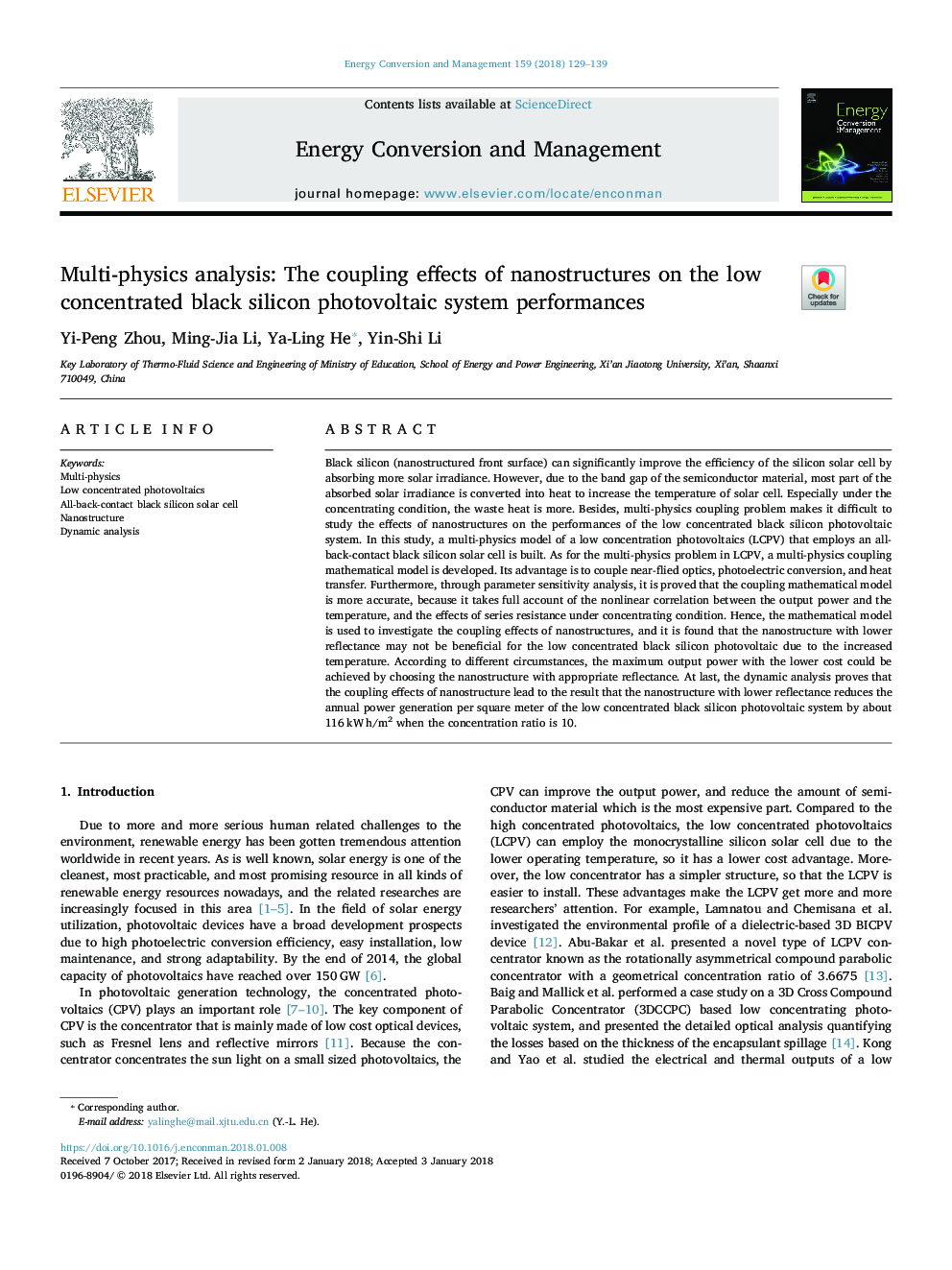| کد مقاله | کد نشریه | سال انتشار | مقاله انگلیسی | نسخه تمام متن |
|---|---|---|---|---|
| 7159047 | 1462803 | 2018 | 11 صفحه PDF | دانلود رایگان |
عنوان انگلیسی مقاله ISI
Multi-physics analysis: The coupling effects of nanostructures on the low concentrated black silicon photovoltaic system performances
ترجمه فارسی عنوان
تجزیه و تحلیل چند فیزیک: اثرات اتصال نانوساختارها بر عملکرد سیستم فتوولتائیک سیلیکون کم متمرکز
دانلود مقاله + سفارش ترجمه
دانلود مقاله ISI انگلیسی
رایگان برای ایرانیان
کلمات کلیدی
چند فیزیک، فتوولتائیک پایین متمرکز، سلول خورشیدی سیلیکونی سیاه و سفید همه تماس پشت، نانوساختار، تجزیه و تحلیل پویا،
موضوعات مرتبط
مهندسی و علوم پایه
مهندسی انرژی
انرژی (عمومی)
چکیده انگلیسی
Black silicon (nanostructured front surface) can significantly improve the efficiency of the silicon solar cell by absorbing more solar irradiance. However, due to the band gap of the semiconductor material, most part of the absorbed solar irradiance is converted into heat to increase the temperature of solar cell. Especially under the concentrating condition, the waste heat is more. Besides, multi-physics coupling problem makes it difficult to study the effects of nanostructures on the performances of the low concentrated black silicon photovoltaic system. In this study, a multi-physics model of a low concentration photovoltaics (LCPV) that employs an all-back-contact black silicon solar cell is built. As for the multi-physics problem in LCPV, a multi-physics coupling mathematical model is developed. Its advantage is to couple near-flied optics, photoelectric conversion, and heat transfer. Furthermore, through parameter sensitivity analysis, it is proved that the coupling mathematical model is more accurate, because it takes full account of the nonlinear correlation between the output power and the temperature, and the effects of series resistance under concentrating condition. Hence, the mathematical model is used to investigate the coupling effects of nanostructures, and it is found that the nanostructure with lower reflectance may not be beneficial for the low concentrated black silicon photovoltaic due to the increased temperature. According to different circumstances, the maximum output power with the lower cost could be achieved by choosing the nanostructure with appropriate reflectance. At last, the dynamic analysis proves that the coupling effects of nanostructure lead to the result that the nanostructure with lower reflectance reduces the annual power generation per square meter of the low concentrated black silicon photovoltaic system by about 116â¯kWâ¯h/m2 when the concentration ratio is 10.
ناشر
Database: Elsevier - ScienceDirect (ساینس دایرکت)
Journal: Energy Conversion and Management - Volume 159, 1 March 2018, Pages 129-139
Journal: Energy Conversion and Management - Volume 159, 1 March 2018, Pages 129-139
نویسندگان
Yi-Peng Zhou, Ming-Jia Li, Ya-Ling He, Yin-Shi Li,
